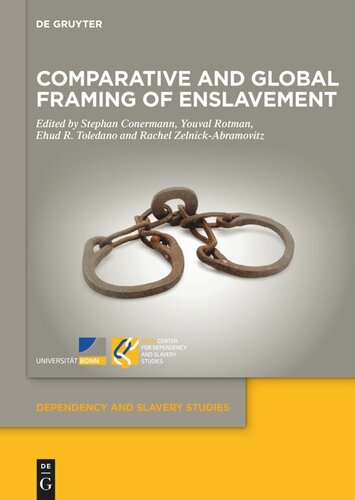

Most ebook files are in PDF format, so you can easily read them using various software such as Foxit Reader or directly on the Google Chrome browser.
Some ebook files are released by publishers in other formats such as .awz, .mobi, .epub, .fb2, etc. You may need to install specific software to read these formats on mobile/PC, such as Calibre.
Please read the tutorial at this link: https://ebookbell.com/faq
We offer FREE conversion to the popular formats you request; however, this may take some time. Therefore, right after payment, please email us, and we will try to provide the service as quickly as possible.
For some exceptional file formats or broken links (if any), please refrain from opening any disputes. Instead, email us first, and we will try to assist within a maximum of 6 hours.
EbookBell Team

4.8
74 reviewsOpen Access
The study of enslavement has become urgent over the last two decades. Social scientists, legal scholars, human rights activists, and historians, who study forms of enslavement in both modern and historical societies, have sought – and often achieved – common conceptual grounds, thus forging a new perspective that comprises historical and contemporary forms of slavery. What could certainly be termed a turn in the study of slavery has also intensified awareness of enslavement as a global phenomenon, inviting a comparative, trans-regional approach across time-space divides. Though different aspects of enslavement in different societies and eras are discussed, each of the volume’s three parts contributes to, and has benefitted from, a global perspective of enslavement. The chapters in Part One propose to structure the global examination of the theoretical, ideological, and methodological aspects of the "global," "local," and "glocal." Part Two, "Regional and Trans-regional Perspectives of the Global," presents, through analyses of historical case studies, the link between connectivity and mobility as a fundamental aspect of the globalization of enslavement. Finally, Part Three deals with personal points of view regarding the global, local, and glocal. Grosso modo, the contributors do not only present their case studies, but attempt to demonstrate what insights and added-value explanations they gain from positioning their work vis-à-vis a broader "big picture."